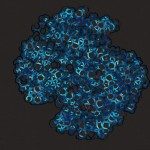About
Protein secretion in bacteria is highly specific. In Gram-negative bacteria, which feature an external (outer) membrane as an additional protective barrier, multiple secretion pathways dedicated to different proteins have been identified. Substrates secreted via the Type II secretion nanomachines are fully folded prior to secretion and are specifically recognised in their native state. In some cases, they even adopt a quaternary structure, as illustrated by the cholera toxin from Vibrio, or Heat-labile toxin from pathogenic Escherichia coli, both hetero-hexamers. The “secretion signal” is therefore likely to be structural in nature and its specific recognition might involve successive interacting partners along the secretion pathway. To understand secretion specificity and to harness T2SS for secretion of designed synthetic substrates, it is essential to understand the recognition mechanism at the molecular level. To achieve this, the Synergy_T2SS project focuses on a comparative analysis of secreted substrates and their interactions with the T2SS complexes, notably with their dynamic filament which is though to drive protein transport and is now called the endopilus (formerly: pseudopilus). This study has been conducted in three model bacteria, Klebsiella, Pseudomonas and Dickeya, in collaboration with the teams of Romé Voulhoux (LCB, CNRS, Marseille) and Vladimir Shevchik (MAP CNRS, INSA, Lyon). In addition to the macromolecular systems team fomr the BIM unit, the Institut Pasteur teams involved in this project include the he BaTS U5 headed by Nadia Izadi-Pruneyre and the BIS laboratory led by Michael Nilges. Professor Edward Egelman, University of Virginia at Charlottesville, USA, a renowned expert in cryo-electron microscopy, is the external collaborator on this project (on his own funds).










